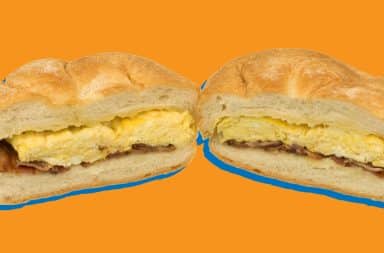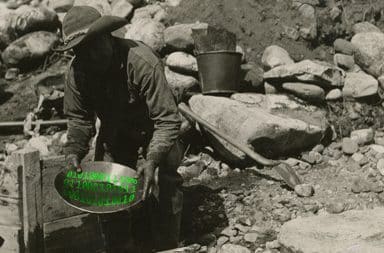Like the angel Gabriel from above, the face of American freestyle skier Gus Kenworthy came to me, on a TV commercial for H&M. He was the man of my dreams: under six-feet tall, athletic, white, and most importantly, gay. H&M was donating 10% of their Pride collection to some charity. That’s pretty cool, I guess.
More importantly, though, they had stuck a sexy gay guy on-screen, and BOOM, money would roll in—specifically, my money, for a $12.99 Pride t-shirt from H&M.
This was the moment that I knew it was possible for me to affect positive social change.
But what did my closest friend, the deep pit in my stomach, think? “Uh, yeah, sure. He's hot. Go ahead,” said the deep pit. And the more I began to think about it, the more corporations didn’t seem that bad, and suddenly I just knew that H&M’s $12.99 Pride t-shirt would finally end at least a decade of violence against the LGBT community. I did have to knock over a gay couple for my Pride merch, but sometimes you have to assault two gay guys to show support for the LGBT community. “You’re welcome!” I told them.
Before the $12.99 Pride t-shirt, a long time ago, like, the beginning of this month, I was woefully un-woke. It was Pride Month, and my LGBT friends were still suffering because of my passiveness. I thought, wasn’t it enough to be a champion for progressive causes?
As it turns out, it wasn’t; I still felt a deep emptiness in the pit of my stomach. But then it hit me: “You’re not really that woke,” the deep pit in my stomach told me. “But, how?” I said, “I’m making a difference. I’m helping those that I have deemed less fortunate than me. Surely, my 90% corn husk, 10% cotton woven shopping tote—which I made myself, I might add—means that I’m woke?”
“Nah,” said the deep pit.
Understandably, I was upset. I had done absolutely everything I could have to make a positive change in the world, short of going insane and actually participating in the political process—and it still wasn’t enough.
But now that feeling was gone. I had a $12.99 H&M Pride t-shirt. The whole world would now say, “Oh, yeah, they’ve got a sweet-ass rainbow shirt. They’re super cool and financially stable—and woke,” and they would erase cleanly from their minds all the biases they had previously held about LGBT people. I knew, with this shirt on my torso, I finally had what it takes to end the social, political and economic alienation of the LGBT community.
After I bought H&M’s $12.99 Pride t-shirt, I still kept my old habits. I still grew my own garden. Cultivating plants, with all of the hard work it takes to simulate third-world labor and wage exploitation, still failed to give me meaning in a world where I didn’t like the current President.
But with my new Pride t-shirt on, I was able to resist market pressures that told me to buy cheaper food. I resisted because my Pride t-shirt was powerful: it told that ambitious, gay Nigerian man trying to escape persecution from his own government, “I’ve got your back!” That message, emboldened by rainbow letters on my $12.99 H&M Pride t-shirt, would do as much for him as asylum ever would.
With a clear conscience, I was finally able to garden in peace.
Besides the Pride t-shirt that I bought at H&M for $12.99 from their Pride collection, I still bought my clothes from the local thrift store. Burdened by massive amounts of college debt, looking to save money however and wherever I could, it was here that I bought almost all of my absolutely killer wardrobe—and all for the price of less than the hourly wage of the people working at the thrift store.
I believe in change. I believe that if enough people buy $12.99 H&M Pride t-shirts, grow their own food and shop at thrift stores, we can change the world.


